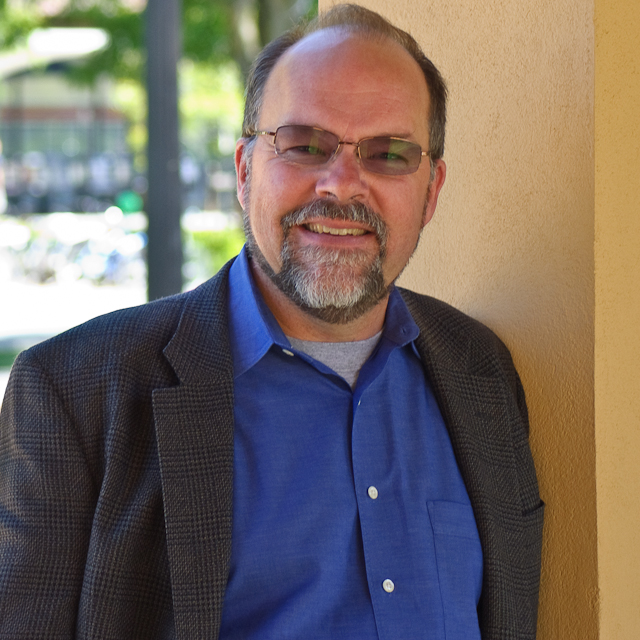
Californians strongly believe local school districts should hold more control over how money is spent in public schools, and a majority favor higher spending in poor districts even if it means shifting money away from their own communities, according to results from a new PACE/USC Rossier School of Education online poll released Thursday.
The findings will be discussed at a conference Thursday in Sacramento sponsored by Policy Analysis for California Education (PACE), a research center based at Stanford University, the University of California, Berkeley, and the University of Southern California.
The poll results align with major findings from Stanford University’s landmark “Getting Down to Facts” project that examined the state of California school finance and governance. PACE will mark the five-year anniversary of “Getting Down to Facts” on Thursday with a new report that updates its recommendations and findings.
"It's encouraging that Californians have intuitively come to the same conclusions as the ‘Getting Down to Facts’ study about the most important steps necessary to improve the state's public schools,” said poll director Dan Schnur, who also serves as the director of USC's Jesse M. Unruh Institute of Politics. "The next challenge is to convince the politicians."
In the new PACE/USC Rossier poll, two-thirds of Californians – 66 percent – agreed the state should provide more resources to poorer school districts even if it resulted in decreased spending in wealthier districts.
The majority, 55 percent, favored higher spending in low-income schools even if it meant less spending in their neighborhood schools.
And 70 percent of Californians said it was important to leave decisions about how to spend money to local public schools and school districts, compared to 19 percent who said local control over school funding was not important.
“‘Getting Down to Facts’ identified two key problems in California’s education system – the state’s failure to target resources to the schools and students who need them most, and the heavy burden placed on local educators by the state’s rules about how resources can be used,” said David N. Plank, executive director of PACE. “These findings suggest that Californians understand these problems and want them solved.”
Results from the PACE/USC Rossier poll also reinforce another major finding from “Getting Down to Facts” that Californians strongly believe increases in spending on the state’s public schools should be tied with reforms that allow the money to be spent more effectively.
According to the poll, two-thirds of Californians said the state should increase education spending to improve school performance.
But an even larger percentage of Californians – 76 percent - said any increase in spending should be accompanied by changes to the way resources are used.
Californians also believe teachers have the most influence over educational success and prioritize hiring new teachers over increasing teacher salaries.
When given the option to use additional education funding to either increase teacher salaries or hire new teachers, two-thirds of Californians said they would choose to hire more new teachers and 17 percent said they would increase teacher salaries.
Nearly half of Californians said teachers are the group most responsible for improving student academic performance in schools, with only 22 percent of those surveyed naming parents and 5 percent saying principals had the most impact on students’ classroom performance.
But Californians also showed a strong desire to give administrators more power to get rid of ineffective teachers.
Nearly 80 percent of Californians said principals should have more freedom to fire teachers whose performance is unsatisfactory, compared to just 13 percent who disagreed.
When asked if principals should be able to choose the teachers that work in their schools even if it meant reducing the teachers’ rights, 47 percent agreed and 41 percent disagreed.
But an overwhelming majority, 73 percent, still said teachers should not lose their jobs without a fair hearing, including 79 percent of whites and 66 percent of Latinos.
Californians are also hungry for more information about how their neighborhood schools are performing.
Only one-third of those surveyed said they had enough information about how their schools are faring, with 40 percent saying they didn’t have sufficient information and 26 percent who said they didn’t know.
Nearly 71 percent said they didn’t know or were unsure if they knew their school’s Academic Performance Index score, a number which rates schools and measures improvement based on factors including state standardized tests.
“After more than a decade of accountability, many Californians are unaware of how their schools perform or how resources are spent,” said Dominic Brewer, Clifford H. and Betty C. Allen Professor in Urban Leadership at the USC Rossier School of Education. “But they want to know. The poll clearly shows frustration with the lack of transparency in the system.”
Californians believe student test scores are the most important measure by which teachers should be judged but emphasized they shouldn’t be the only tool used in evaluations, reflecting results from the USC Dornsife/Los Angeles Times poll conducted in November.
In that poll, 72 percent of voters agreed testing is important but said teachers should be evaluated on more than student scores on a single test.
In the PACE/USC Rossier poll, 81 percent said student test scores should make up less than half of a teacher’s evaluation.
When asked what single factor should be most important in evaluating teachers, 31 percent said student achievement on standardized tests, 23 percent said teaching experience and 10 percent said teacher evaluations.
The PACE/USC Rossier poll was conducted April 26 to May 1, 2012 and surveyed 956 California adults online. The margin of error for the overall sample was +/- 3.2 percentage points.
A press event on the release of the PACE/USC Rossier poll and a PACE policy report that updates findings and recommendations from the “Getting Down to Facts” studies will take place Thursday from 1 to 3 p.m. at the Department of General Services Auditorium, 1500 Capitol Avenue, Sacramento.
For more information, visit www.stanford.edu/group/pace/cgi-bin/wordpress/event/getting-down-to-facts-five-years-later.
To view poll results, visit http://www.m4strategies.com/newsdisplay.php?vid=21.
Subscribe to our monthly newsletter.